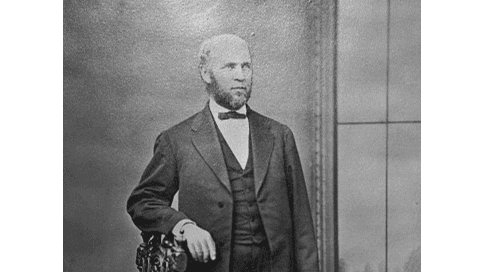William H. Webb (1816-1899) was the son of a shipbuilder who arguably became the most successful and innovative American shipbuilder of the 19th century. Isaac Webb taught his son the art of building ships of sail, as the innovation of the steamboat had yet to arrive. When his father died in 1840, Webb took control of the family shipbuilding business. For the next three decades Webb would contract, design, and oversee the construction of commercial, military and recreational vessels for buyers from around the globe.
His shipyard produced fast sailing packets, clipper ships, side-wheelers, ferry boats, sailboats, steamships, wooden ships, and ironclads. While he remained the head of his shipyard, he would dominate the American industry. His amount of ships and tonnage would far outpace his competitors. European powers, like Russia, Italy, and France, purchased warships from Webb for their navies.






